12 Strange Sea Creatures You Never Knew Existed
Meet the ocean's oddball dozen, 12 of the strangest sea creatures, that would make even the bravest snorkeler scream. Prepare to be amazed (or maybe horrified) by the truly weird and wonderful creatures lurking beneath the waves.
1. Goblin Shark
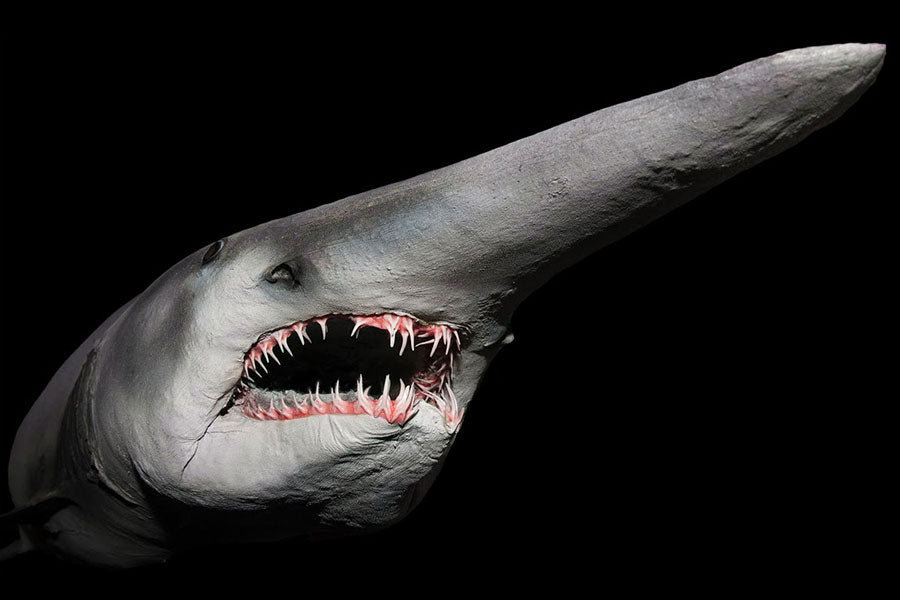
Forget the sleek, streamlined predators you see in movies – the goblin shark looks like it crash-landed on Earth from another planet. With a snout that resembles a flattened shovel and rows of dagger-like teeth that protrude from its gums, the goblin shark is the stuff of nightmares (or perhaps really cool monster movies). But don't let its fearsome appearance fool you – these elusive sharks are actually quite rare.
Living in the crushing darkness of the deep sea, very little is known about their behavior. Scientists believe they use their extendable jaws and those unique, protruding teeth to snatch unsuspecting prey, but exactly how they hunt remains a mystery.
| Scientific Name | Mitsukurinidae Owston |
| Common Names | Goblin Shark, Snaggletooth Shark |
| Habitat | Deep ocean waters worldwide |
| Size | Up to 10 ft (3 m) long |
| Conservation Status | Unknown |
2. Frilled Shark
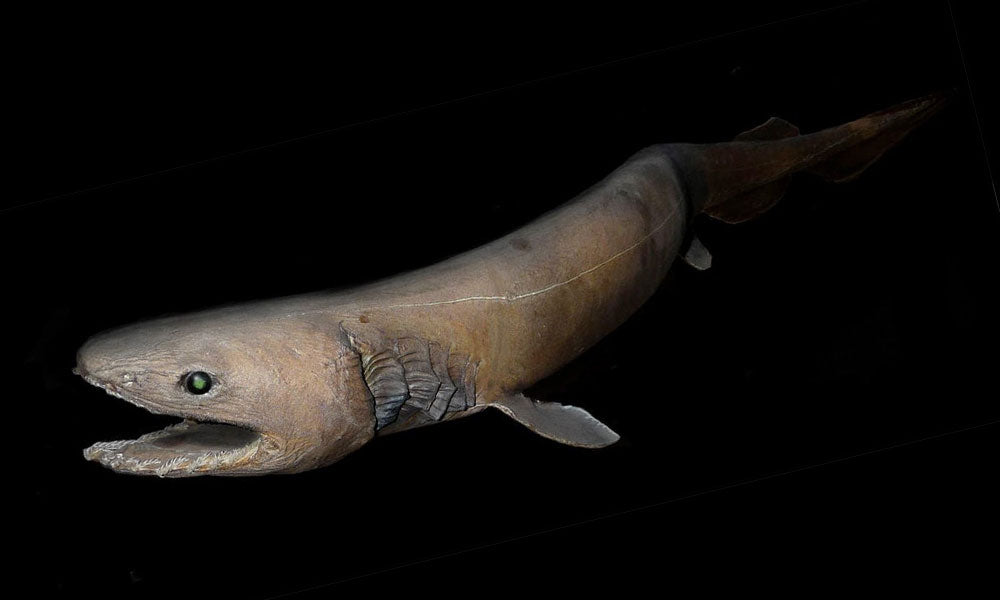
Imagine a living fossil with a mouthful of needle-like teeth! The frilled shark is a slender, eel-like shark that looks like it swam straight out of the Paleozoic Era.
Nicknamed the "living fossil" because of its resemblance to ancient sharks, this deep-sea dweller has a unique hunting strategy. It can bend its incredibly flexible body and rapidly extend its jaws to snatch prey like squid and fish.
| Scientific Name | Chlamydoselachus anguineus |
| Common Names | Frilled Shark, Living Fossil |
| Habitat | Deep ocean waters worldwide |
| Size | Up to 6 ft (1.8 m) long |
| Conservation Status | Least Concern |
3. Giant Squid
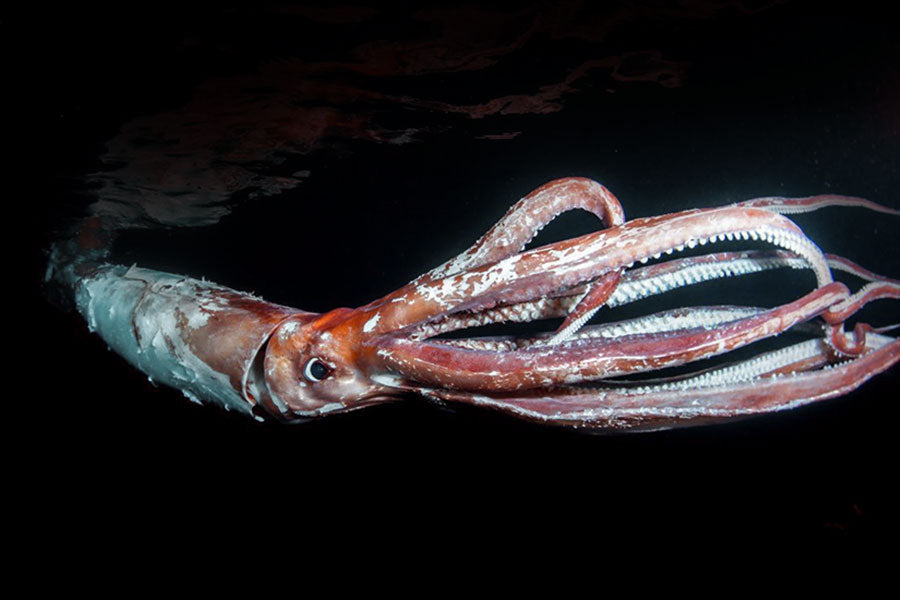
The giant squid is the ultimate deep-sea monster, inspiring legends of kraken and other giant sea creatures. With bulging eyes the size of basketballs and tentacles that can grow as long as a school bus, these colossal invertebrates are the largest known invertebrates on Earth.
They live in the inky blackness of the deep sea, using bioluminescent organs to lure prey and escape predators. While encounters with giant squid are rare, their immense size and elusive nature continue to capture our imaginations.
| Scientific Name | Architeuthis dux |
| Common Names | Giant Squid, Colossal Squid |
| Habitat | ANSWER |
| Size | Up to 46 ft (14 m) long |
| Conservation Status | Unknown |
4. Deep Sea Anglerfish

Imagine a anglerfish – a grotesque deep-sea fish with a bioluminescent lure dangling from its head. Now, take that image and crank the weirdness up to eleven. Deep sea anglerfish come in a variety of bizarre shapes and sizes, with some boasting enormous heads, razor-sharp teeth, and dangling appendages that resemble fishing lures. These lures, tipped with bioluminescent bacteria, act like a deep-sea disco ball, attracting curious prey into the anglerfish's gaping maw.
The anglerfish's lure is so effective that some species even dangle a modified version of their first dorsal fin to lure in unsuspecting victims.
| Scientific Name | Lophiiformes |
| Common Names | Deep Sea Anglerfish, Black Seadevil, Pelican Anglerfish |
| Habitat | Deep ocean waters worldwide |
| Size | Most species under 3 ft (1 m) long |
| Conservation Status | Unknown |
5. Dumbo Octopus
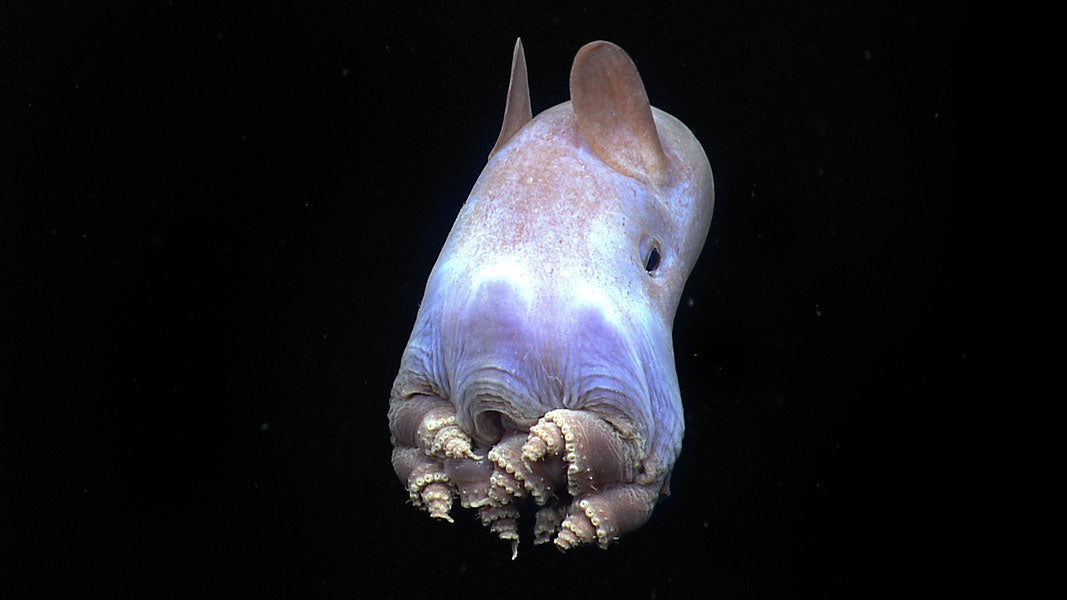
Forget the terrifying monsters of the deep – meet the Dumbo octopus, the deep sea's resident cutie . Named for the adorable elephant of the same name, this deep-sea dweller has fin extensions that resemble Dumbo's ears. These fins help the Dumbo octopus to glide gracefully through the water as it searches for food on the ocean floor.
Despite its endearing appearance, this strange species of octopus is a skilled predator, using its sensitive tentacles to probe the seafloor for small crustaceans and worms.
| Scientific Name | Grimpoteuthis |
| Common Names | Dumbo Octopus, Earshell Octopus |
| Habitat | Deep ocean waters worldwide |
| Size | Up to 8 inches (20 cm) tall |
| Conservation Status | Unknown |
6. Frogfish
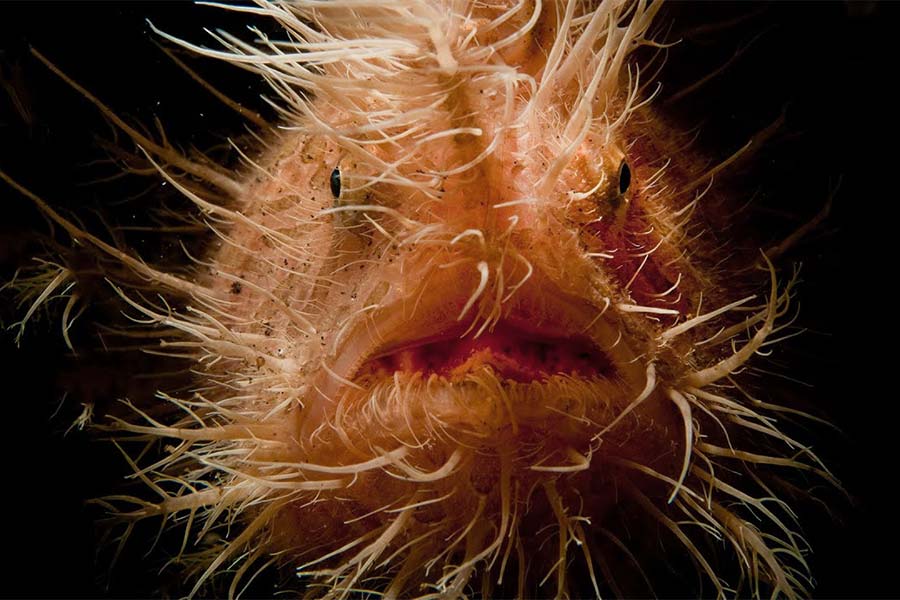
The name "frogfish" might conjure up images of slimy amphibians, but this aptly named fish is a master of disguise on the coral reef. Frogfish have a stocky build and fleshy appendages that resemble legs, allowing them to hop and crawl along the reef bottom.
Frogfish are ambush predators, luring in unsuspecting prey with a lure on their head and then snapping them up with a surprisingly powerful jaw. Some frogfish species can even mimic the appearance of harmless creatures, like sponges or nudibranchs, to trick their prey.
| Scientific Name | Antennariidae |
| Common Names | Frogfish, Anglerfish, Lurespot Fish |
| Habitat | Coral reefs and shallow tropical waters worldwide |
| Size | Up to 10 inches (25 cm) long |
| Conservation Status | Least Concern (some species threatened by habitat loss) |
7. Japanese Flying Squid
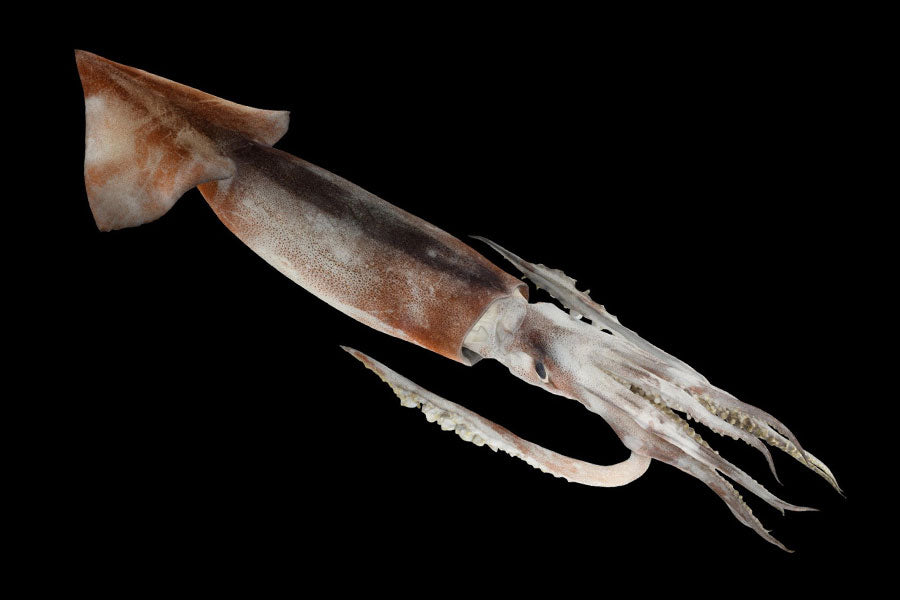
While technically not capable of true flight, the Japanese flying squid has a remarkable trick up its sleeve (or rather, fin). This squid has broad, flattened fins that resemble wings, allowing it to "glide" through the water for short distances to escape predators.
The Japanese flying squid also uses its bioluminescent organs to create a dazzling light show, potentially confusing predators or attracting mates.
| Scientific Name | Todarodes pacificus |
| Common Names | Japanese Flying Squid, Flashlight Squid, Rocket Squid |
| Habitat | Coastal waters of the Indo-Pacific Ocean |
| Size | Up to 6 inches (15 cm) long (body) with fins up to 4 inches (10 cm) wide |
| Conservation Status | Least Concern |
8. Isopod
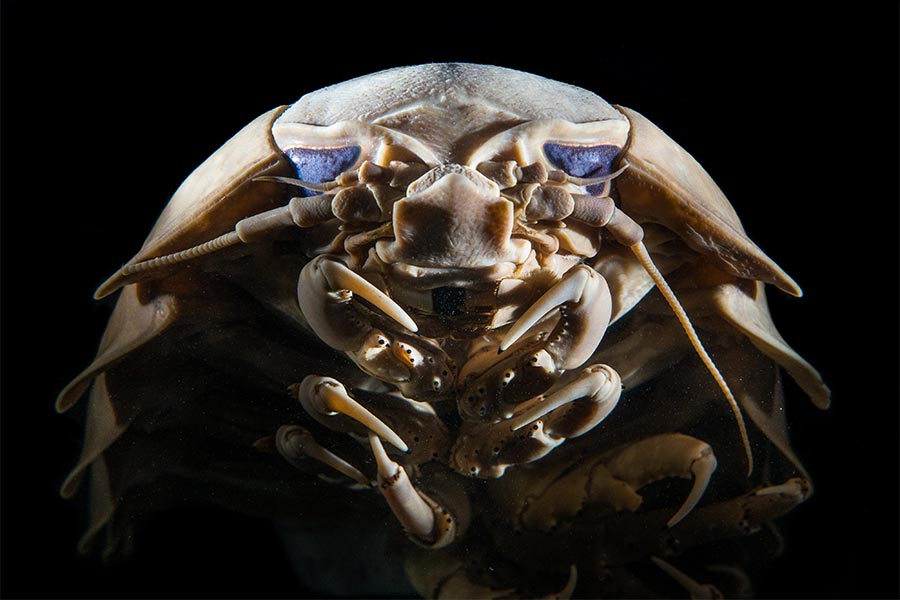
Imagine a giant pill bug, but the size of a dinner plate, and armored like a knight – that's the giant isopod! These hardy crustaceans are scavengers, thriving in the crushing depths of the ocean where sunlight never reaches.
Their tough exoskeletons protect them from the immense pressure and allow them to munch on any unfortunate creature that sinks to the seafloor. Giant isopods may look prehistoric, but they're actually distant relatives of crabs, lobsters, and shrimp.
| Scientific Name | Bathynomus giganteus |
| Common Names | Giant Isopod, Deep-Sea Isopod, Gigantism Isopod |
| Habitat | Deep seafloor worldwide |
| Size | Up to 9 inches (23 cm) long |
| Conservation Status | Least Concern |
9. Nautilus
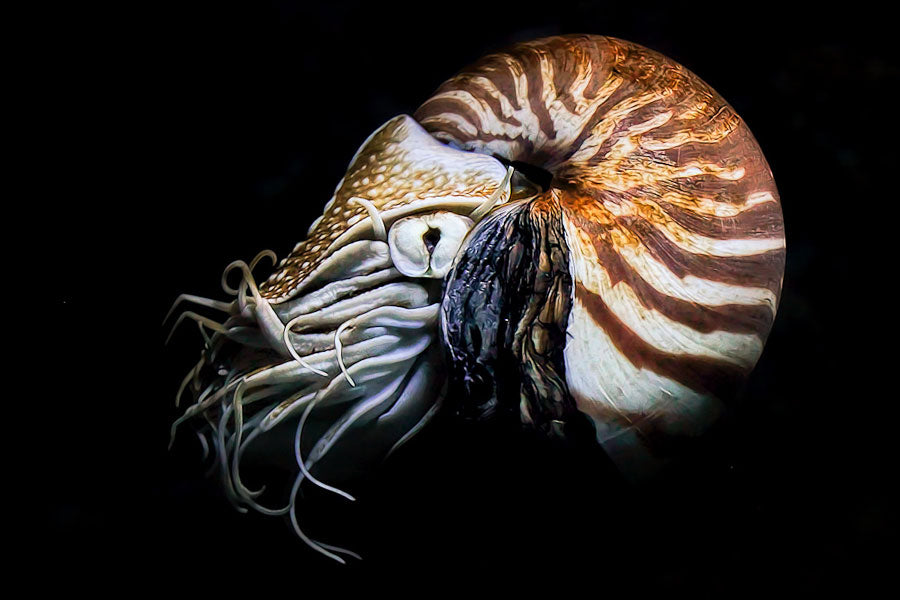
Meet the original underwater astronaut! The nautilus is a shelled cephalopod, a relative of squid and octopus, that has been around for millions of years. It uses its jet-propelled shell to navigate the ocean depths, gracefully gliding through the water column.
The nautilus has one of nature's most beautiful shells known, its pearly shell is divided into chambers, with the animal residing in the newest chamber and pumping gas into the older ones to control its buoyancy. These fascinating creatures are a living link to the past, offering a glimpse into a bygone era of the ocean.
| Scientific Name | Nautilus pompilius |
| Common Names | Nautilus, Chambered Nautilus, Pearly Nautilus |
| Habitat | Deep coral reefs in the Indo-Pacific Ocean |
| Size | Shell up to 10 inches (25 cm) in diameter |
| Conservation Status | Vulnerable (due to habitat loss and overfishing) |
10. Coelacanth
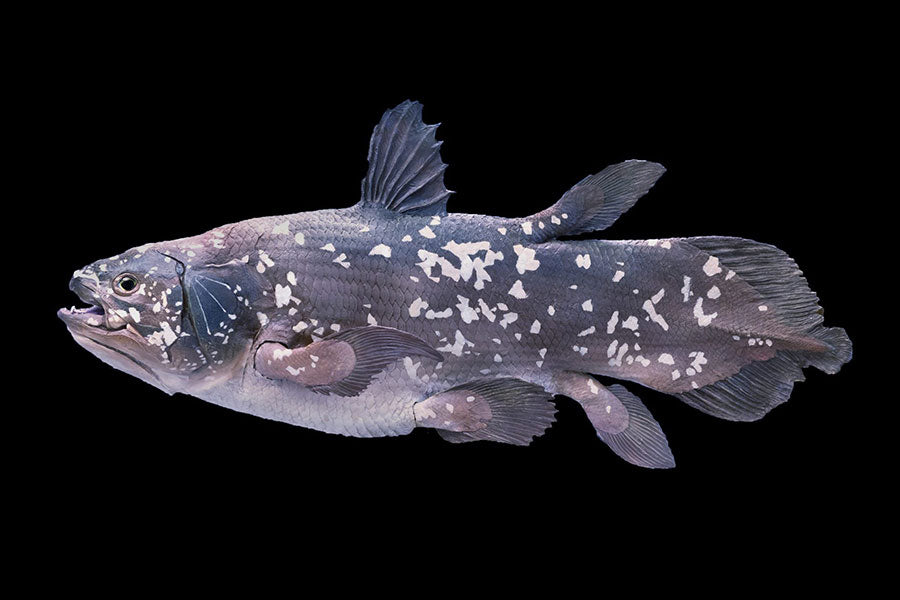
Thought to be extinct for over 66 million years, the coelacanth is a living fossil that defied the odds! This prehistoric fish has lobed fins that resemble legs, hinting at the possible evolutionary connection between fish and land animals.
Coelacanths are slow-moving bottom feeders, using their large snouts to sniff out prey buried in the seabed. The discovery of the first living coelacanth in 1938 was a scientific sensation, proving that some creatures we thought were long gone are still swimming the deep.
| Scientific Name | Latimeria chalumnae (Atlantic) & Latimeria menadoensis (Indonesian) |
| Common Names | Coelacanth, Living Fossil, Old Fourlegs |
| Habitat | Deep ocean waters near Africa, Indonesia, and the Americas |
| Size | Up to 6 ft (1.8 m) long |
| Conservation Status | Vulnerable (due to habitat destruction and bycatch) |
11. Sunfish
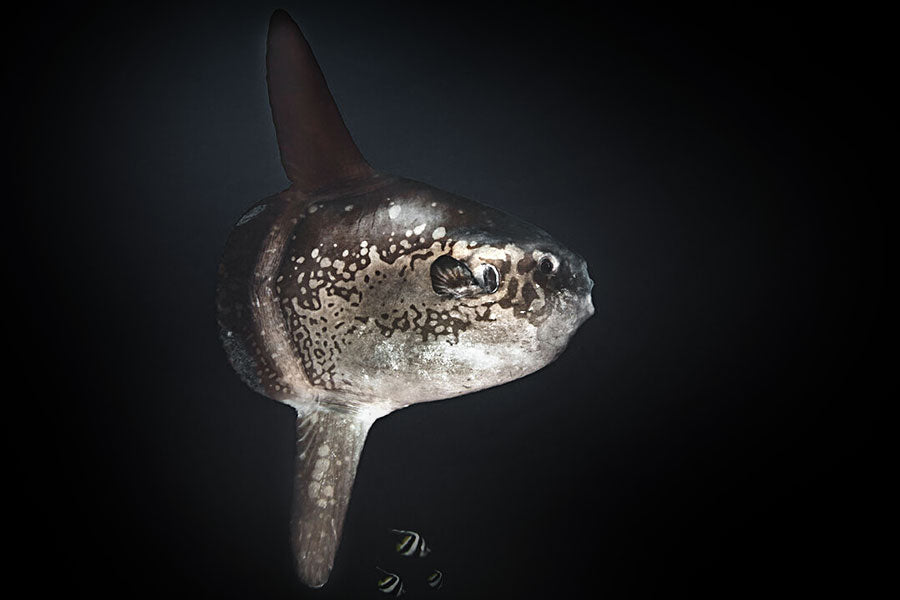
Imagine a giant, flattened fish that looks like a misplaced beach ball with fins. Meet the sunfish, the world's heaviest bony fish, tipping the scales at a whopping 5,000 pounds (2,268 kg)! Nicknamed the "ocean sunfish" for its habit of basking in the sun at the water's surface, this oddball creature is a gentle giant. Despite its immense size, the sunfish has a surprisingly tiny mouth. Don't let that fool you though – they're not picky eaters!
Sunfish spend their days munching on jellyfish, slowly cruising through the open ocean waters worldwide. Sadly, their laid-back lifestyle and accidental entanglement in fishing gear have landed the sunfish on the "Vulnerable" list.
| Scientific Name | Mola mola |
| Common Names | Sunfish, Ocean Sunfish, Mola |
| Habitat | Open ocean waters worldwide |
| Size | Up to 10 ft (3 m) long and 10 ft (3 m) tall |
| Conservation Status | Vulnerable (due to habitat loss and bycatch) |
12. Narwhal
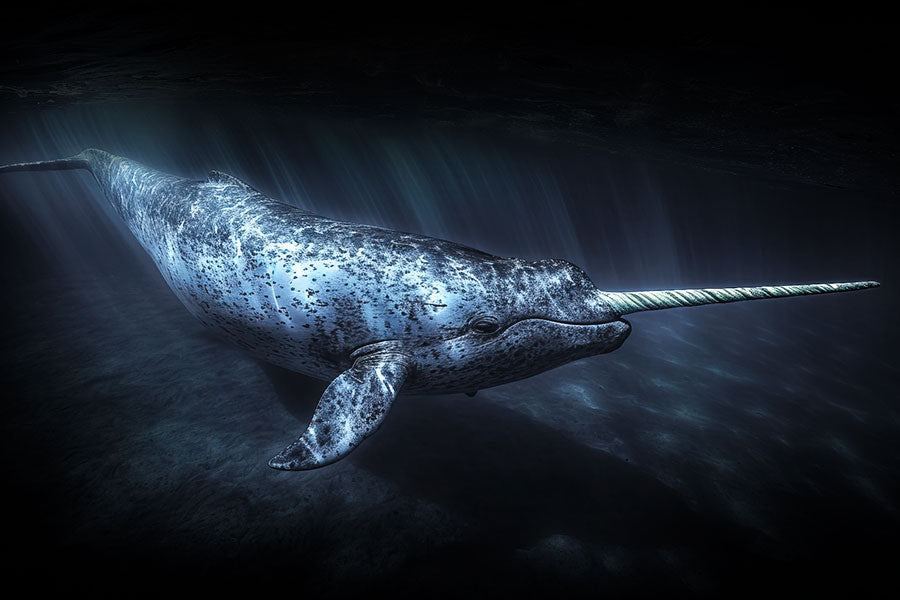
Imagine a unicorn of the sea, complete with a spiraling tusk that can grow up to 10 feet long! That's the narwhal, a social whale found in the frigid Arctic waters. But this tusk isn't just for show – scientists believe it might be used for everything from communication to sensing changes in water pressure.
Narwhals are social creatures, often gathering in large pods to hunt and migrate. Their calls have been described as whistles, clicks, and even moos!
| Scientific Name | Monodon monoceros |
| Common Names | Narwhal, Unicorn of the Sea |
| Habitat | Arctic Ocean |
| Size | 13-16 ft (4-5 m) long |
| Conservation Status | Near Threatened (due to climate change and habitat loss) |
Celebrating Strange Sea Creatures
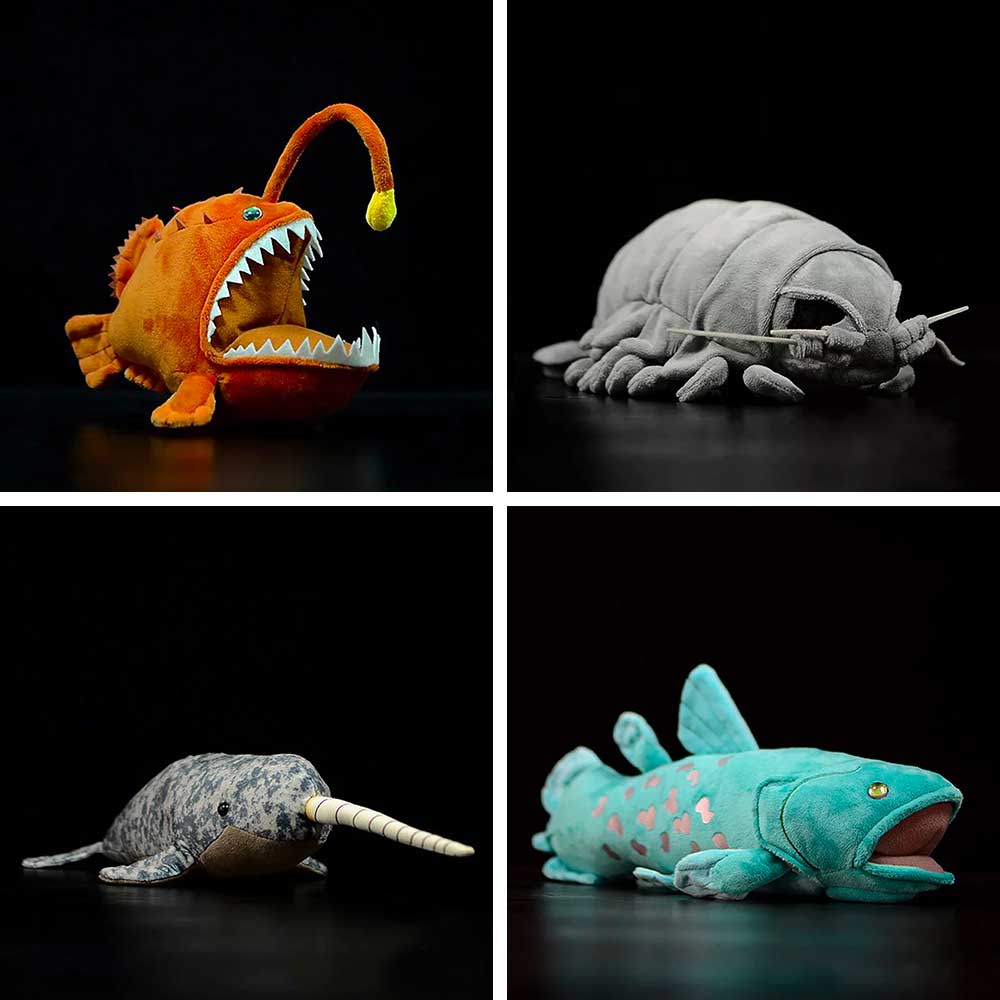
Can't get enough of those adorable narwhals and giant squids? Now you can cuddle up for a cause with our plush sea creature pals! Not only will you get the cutest ocean friend, but a portion of every purchase goes directly towards protecting real-life sea animals and coral reefs.
Show your love for the ocean and bring home a huggable hero – it's the perfect way to combine cozy comfort with critical conservation efforts!
Shop Ocean Plushies




